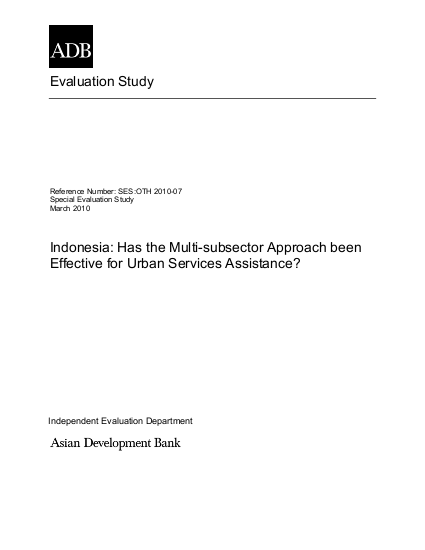
The evaluation covers all ADB urban multi-subsector operations in Indonesia. These projects were evaluated for their implementation performance and delivery of outputs. The performance of multi-subsector projects needs to be measured in terms of financial and time savings for households, improved health conditions, increased school attendance, and conveniences provided by various amenities and entertainment. However, very few past ADB urban projects in Indonesia defined specific criteria and indicators to measure targets, established actual baseline data, set quantified targets for any of these goals, or clearly defined beneficiaries. As a result, intended impacts have not been readily measurable. Therefore, the SES assessed ADB’s contribution to improvements in urban development through a combination of perception assessments, output analyses, field visits, and document reviews.
On-going projects were reviewed to assess implementation performance. Past country strategies and programs, and urban development sector strategies for Indonesia were also reviewed to determine their strategic focus and relevance. Technical assistance (TA) operations and program loans were studied to understand how ADB and other key aid agencies collaborated to improve sector performance through policy dialogue and joint capacity-building initiatives. It should be noted that external factors (e.g., the 1997 Asian financial crisis and decentralization) affected the performance of multi-subsector projects, making it difficult to isolate other factors causing poor performance of urban project, and thus to determine whether they occurred due to intrinsic shortcomings in the project design and setup.
Resource collections
- UN Habitat - Urban Response Collection
- Urban Response - Urban Crisis Preparedness and Risk Reduction
- Urban Response Collection - Community Engagement and Social Cohesion
- Urban Response Collection - Economic Recovery
- Urban Response Collection - Environment and Climate Change
- Urban Response Collection - Housing, Land and Property
- Urban Response Collection - Urban Crisis Response, Recovery and Reconstruction
- Urban Response Collection - Urban Resilience